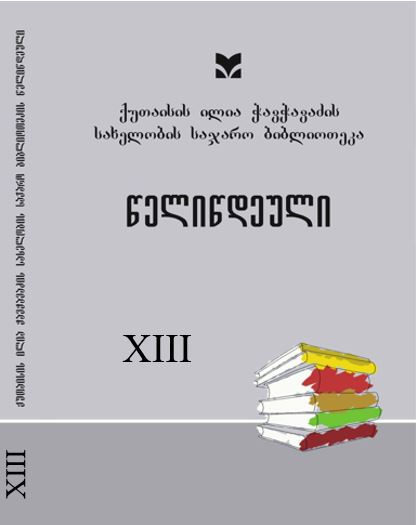Structural and Semantic Analysis of Surnames and Nicknames of Migrants from Samtskhe-Javakheti to Sanavardo (Kvareli Municipality)
DOI:
https://doi.org/10.48614/yk.13.2021.139-148Keywords:
Samtskhe-Javakheti, Anthroponymy, Derived Surnames, NicknamesAbstract
The population from different parts of Georgia constantlymoved from one place to another. The reason for this was different historical factors at different times. The object of our research is the anthroponymy of the population displaced from SamtskheJavakheti to the village of Sanavardo (Kvareli Municipality) during historical migrations. The migrant population from all Samtskhe-Javakheti municipalities (Akhaltsikhe, Adigeni, Aspindza, Borjomi, Akhalkalaki, Ninotsminda) lives next to the locals and gives a diverse picture.
The surnames of the population of the village Sanavardo and the surnames derived from them are quite interesting. As far as we know, surnames are derived from ancestral names or nicknames. The surname is an anthroponymic category, the semantics and structure of which is quite enviable and noteworthy in terms of anthroponymy, as well as the study of the country’s history, migration, demography, and social issues. In almost all parts of Georgia, there are surnames derived from the other surnames. In the village of our study, the surnames which have been derived from the main surname are obtained by the abbreviation (e.gBalianti), or by the name or nickname of the father (Besoanti), mother (Pranchiaanti), and ancestor (Davituanti).
The analytical material confirms the different ways of formation of surnames which is mainly due to the end of the stem of the surname. The different surnames according to the stem are mainly formed with the following endings: -aanti, -atni, -oanti, -otni, -ainti -ienti, -uanti.
The role of nicknames in the formation of surnames is special. The most interesting is composite surnames derived from nicknames of several generations. For example, GogalatTekle’s Paata, Khanot’s Baliantebi.
As for the village nicknames, they are diverse in terms of semantics and formation. On the basis of the analysis of the material, we highlighted nicknames according to a foreign origin, women, physical features, characters, frequently uttered words, or just different signs or conditions, origin, or ethnic marks. Example: Marshali, Kantuzha, Karako, Jojo, Fekhshvela, Tonka, Tskhvaro, Khvliko, Batiputskia, Vargaveli, Rusi Nina, and others.
Particularly noteworthy is the fact that the formation of surnames and nicknames characteristic toSamtskhe-Javakheti gives an almost similar picture in the anthroponymy of the village Sanavardo today.




